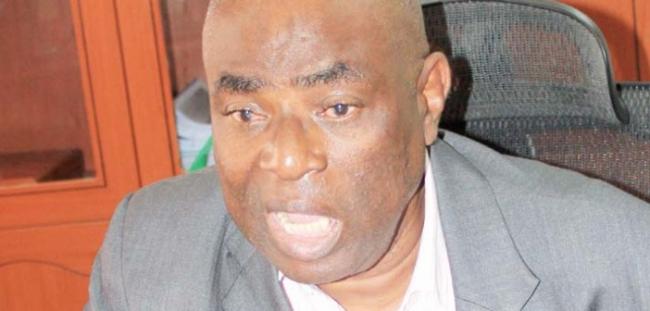


Our target’s to supply 300,000 meters –Ajifowobaje, MD, Ikeja Electric

ON November 1, 2013, history was made in the annals of the power sector in Nigeria when the Power Holding Company of Nigeria (PHCN) was finally unbundled and its assets transferred to the new investors, who took over its operations from the defunct PHCN.
Upon takeover, many of the distribution companies (Discos as they are called) now inherited obsolete equipment, huge debts- as a result of unpaid electricity bills- and an ageing workforce.
But two years after taking over the assets, the Managing Director of Ikeja Electricity Distribution Company (Ikeja Electric), Mr. Abiodun Ajifowobaje, in this interview, he gives insight into how the management of the company has been able to improve on electricity distribution from a paltry 200mw, allocated to it on takeover, to 500mw at the moment.
He also shares the success story of the company on how it intends to give about 300,000 meters to customers under its Advanced Metering Infrastructure (AMI) scheme and Customer Enumeration, Technical Audit and Asset Mapping (CETAM) to bridge the huge metering gap.
Ajifowobaje equally sheds more light on how Ikeja Electric (IE) is resolving infrastructure vandalism and energy theft as part of efforts to ensure that genuine customers are not denied access to electricity.
EXCERPTS:
The journey so far
When we took over in November 2013, power allocation to IE was hovering between 300mw to 320mw. At a stage, it went as low as 200mw especially when power supply crisis early in the year went so bad that at a point we got zero megawatt.
Following improved power generation, especially driven by the progress being recorded at Egbin Power Station that now generates1,100mw, we have in the last few months witnessed improved allocation to Ikeja, hovering between 450mw and 500mw. This has translated to more power supply to our customers.
However, there is still a shortfall as we require 1,250mw of power to customers within our network. Since takeover, we have, among other strategic initiatives, continued to upgrade our network for seamless and equitable distribution of the power we get.
We also have localised cases where we have witnessed issues with transformers and feeders. We are responding to these issues while implementing a wholistic overhaul programme that would reposition Ikeja Electric for optimal performance at all times all over our network.
We have made significant progress in this regard and remain committed to working with all stakeholders to ensure our esteemed customers are serviced excellently, efficiently and sustainably.
Replacing obsolete equipment
When the new management took over, promises were made for replacement of bad transformers and upgrade of assets.
We are replacing bad transformers and upgrading our assets. Between January and June this year, we have replaced 96 defective transformers and have effected major repairs on feeders and other installations. The upgrade is a continuous process that will ultimately ensure stability and efficiency within the network. There is one aspect of asset that we consider as the most crucial. That is our people. We have, since the takeover, continued to invest in our people through local and foreign training programmes designed for all categories of staff. We are confident to state that our people are among the leading professionals in the power sector and we have a seamless succession plan for the future through our Graduate Engineering Programme (GEP). We believe that all of our human capital investment will culminate in the best possible service for our customers.
Update on metering scheme
We have rolled out our Advanced Metering Infrastructure (AMI) scheme. We project that we will, on a monthly basis, install 12,000 meters. As soon as our contractors mobilise more teams, we will be hitting 15,000 meters installation per month. After our 2,000 meter installation pilot scheme, which was completed recently, we have installed another 8,500.
For October, we need less than 2,000 units to hit the target, and this will be achieved by the end of the month. We had earlier said we will install 10,000 meters for October. The programme is very much on course and we are confident that we will realise our target of deploying these 300,000 smart meters to our customers.
Delay in metering customers
The point is that we wanted to install meters that are smart, reliable, secure and futuristic. This is in line with our customer-centric approach of ensuring service excellence in all our operations.
Prior to the ongoing deployment, we had to embark on a thorough review of the project to ensure that the solution we adopt is one that will resonate with global best practice. We went through a lot of painstaking attention to details and stakeholder engagements to arrive at the meters we are currently installing.
These smart meters that will be installed at residential and business locations can be monitored remotely from our office. A customer can also monitor how he/she progresses on a daily basis using the meter.
For instance, if a customer intends to spend N10,000 on a monthly basis, that could be achieved. What we have now is secure, tamper-proof which puts the power of conservation and management of usage in the hands of our customers.
Managing estimated billing
That is the essence of CETAM. It will help to eradicate estimation because estimation is based on number of people we have on our database. So if we have more customers, it means what we are going to share as bill will reduce per customer.
The second aspect of that project is the technical audit. All our core assets such as cables, poles, transformers will be captured using our GPRS system. And the third one is asset mapping. So, on the long run, what we are going to have is that immediately we have a customer, we will tie that customer to a transformer, we will tie the transformer to feeder and then a 33KV feeder. So by the time a customer appears, we can easily locate him on the network.
By the time we marry these two projects together, you will discover that everything will be working seamlessly and bypassing of our meter becomes a thing of the past.
Estimated billing will be eradicated and we will also be able to identify all the weak links on our network and this will help us to do network expansion and further assist us to do load management and balancing.
Effective metering of customers
We have drawn our timetable on how we are going to cover all our customers. In the first instance, we are going to meter 300,000 customers. But there is no way we can bring in all the 300,000 meters for installation in one month. There are some we are going to install now, and it continues until December 2016. The wholistic timetable for the installation will be strictly adhered to because it was informed by parameters that are vital to the overall success of the project.
In addition to the AMI project, our board has just approved the implementation of CAPMI scheme to boost the process of metering. The fact still remains that the meters are free whether through CAPMI or the AMI scheme. If customers pay under CAPMI to acquire meters, IE will refund such monies over time. The procedure through which our customers can leverage our CAPMI scheme will be made public soon. The meters will help us effectively to monitor and manage customer consumption as well as minimise losses.
Secondly, our Customer Enumeration, Technical Audit and Asset Mapping (CETAM) initiative is targeted at making every consumer of electricity within our network our customer indeed. This initiative has kicked-off fully and we are going from house to house. The plan is to ensure customers are adequately captured on our database. This will ultimately lead to enhanced service delivery and more efficiency in billing.
The other aspect of this initiative is the technical audit. All the power assets from transformer, cables, poles, and so on, used for our operations will be captured using our technology. In the long run, immediately we identify a customer, we can map the customer to a transformer; map the transformer to a feeder and so on. The data is needed to manage the system effectively. We expect that this project will be concluded in the next seven to 10 months.
A combination of the metering scheme and the CETAM initiative is certain to produce seamless service within the IE network. In fact, bypassing our meters and other acts of sabotage will ultimately be checked. By the time we finish CETAM, we will be able to identify all the weak technical points on our network and now plan on how to do network expansion and maintenance. Of course, this will assist us to do good management and balancing.
Hike in electricity tariffs vis a vis IE’s position
Our 10-year tariff schedule went through the regulator’s process, that is, Nigeria Electricity Regulatory Commission (NERC). The truth is that whatever is realised from the tariff is used to fund the entire value chain of the power industry – generation, transmission, NERC and others. When we say a tariff must be cost-reflective, we mean it must pay for everything along the value chain. If the tariff is cost-reflective, the only thing that distribution companies keep is less than 20 per cent of the entire money made.
NERC brought out a guideline and one of the guidelines is that we meet our customers and agree on pricing terms. In IE, we had public consultations with the Manufacturers Association of Nigeria (MAN) as well as other stakeholders and consumers. After that, we made our initial presentation to NERC.
Source: The Sun
Share this post
Naijanetwork Forum Statistics
Threads: 16490,
Posts: 19789,
Members: 10538


